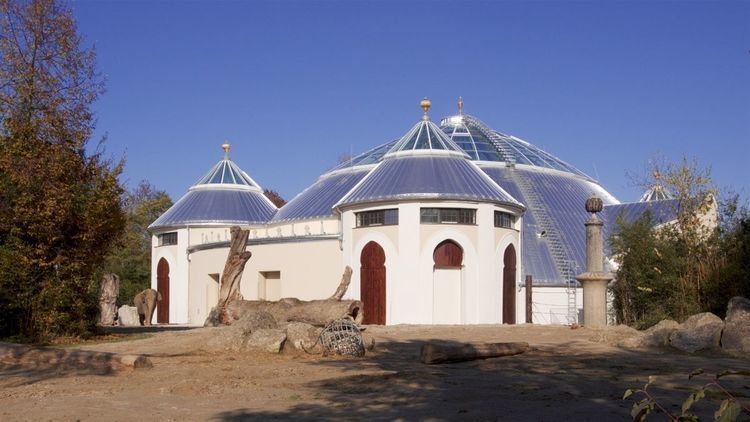Date opened 1 August 1911 Land area 40 ha (99 acres) No. of species 767 (2014) Area 40 ha | No. of animals 18,943 (2014) Annual visitors 2,283,739 (2014) Phone +49 89 625080 | |
 | ||
Address Tierparkstraße 30, 81543 München, Germany Hours Open today · 9AM–5PMThursday9AM–5PMFriday9AM–5PMSaturday9AM–5PMSunday9AM–5PMMonday9AM–5PMTuesday9AM–5PMWednesday9AM–5PM Notable animals Lars (Polar bear), Michi (Polar bear) Similar Deutsches Museum, Olympiapark, Wilhelma, Nuremberg Zoo, Nymphenburg Palace Profiles | ||
Hellabrunn Zoo (or Tierpark Hellabrunn in German) is a 36-hectare (89-acre) zoological garden in the Bavarian capital of Munich. The zoo is situated on the right bank of the river Isar, in the southern part of Munich near the quarter of Thalkirchen. As the groundwater level here is rather high and the water is of very good quality, the zoo can cover its needs for freshwater by using its own wells.
Contents
A high ratio of enclosures are cageless, relying upon moat features to keep the animals in place. The zoo was the first zoo in the world not organized by species, but also by geographical aspects. For example, the wood bisons share their enclosure with prairie dogs.
In 2013, the zoo was ranked 4th best zoo in Europe (up from 12th). It focuses on conservation and captive breeding rare species such as the rare drill and silvery gibbons. Also gorillas, giraffes, elephants, wood bisons, elk and Arctic foxes were successfully bred in the zoo, which houses a large number of species. It is one of the very few zoos that allows visitors to bring dogs.
Tierpark Hellabrunn is a member of the European Association of Zoos and Aquaria (EAZA) and the World Association of Zoos and Aquariums (WAZA) and participates in the European Endangered Species Programme (EEP).
History
On 25 February 1905 the Verein Zoologischer Garten München e.V. (Engl. Society of the Zoological Garden of Munich) was founded and the Hellabrunn area was chosen as the location for the zoo. The zoo was designed by architect Emanuel von Seidl, and opened to the public on 1 August 1911.
In 1922, the zoo was closed due to the inflation in Germany. It was re-opened on May 23, 1928. It became the first Geo-Zoo in the world (animals were shown and kept with other animals of the same geographic region). It also engaged in controversial back-breeding to "recreate" extinct animals like Heck cattle (to mimic the Aurochs) and the Tarpan.
During World War II, the zoo sustained extensive damage due to Allied air raids, but it was able to reopen in May 1945.
In 1970, a badly needed plan for the renovation of the zoo was drawn up.
Hellabrunn today
In 2014 it was home to 18,943 animals representing 767 species.
The Tierpark Hellabrunn is very active in breeding, reintroduction and conservation projects.
Over 2.2 million people visited Hellabrunn in 2014.
